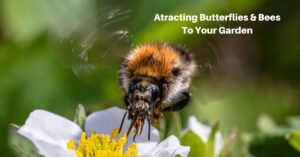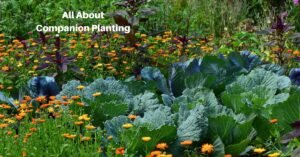Seeing a rabbit hopping through the garden might evoke a sense of charm. Still, for many gardeners, these furry visitors are anything but quaint. Rabbits play a part in the natural ecosystem, of course. Their voracious appetite for a wide range of plants and vegetables, though, can quickly turn them into formidable pests.
Understanding how to manage and prevent rabbit damage effectively is crucial for maintaining a healthy, thriving garden. This article explores various strategies to keep rabbits at bay, ensuring your garden remains a sanctuary for plants, not pests.
Understanding Rabbit Behavior
To effectively deter rabbits, it’s essential first to understand their behavior and preferences. Rabbits are primarily attracted to smooth, tender, and young vegetation, including flowers, vegetables, and fresh shoots. Their diet can encompass various garden plants, making many gardens a potential feast for these creatures.
Rabbits breed prolifically, too – they’re even a common symbol of fast reproduction. With several litters possible in a single season, you may face a rapid increase in their population in your garden area. This breeding cycle, combined with their feeding habits, means that rabbit populations can quickly become a significant issue, especially during the warmer months when food is abundant.
Identifying Rabbit Damage
Recognizing rabbit damage is the first step in addressing the problem, especially if you only see the aftereffects of pests.
Rabbits tend to leave a clean, angled cut on stems and leaves, distinguishing their damage from that of deer, which typically results in jagged, torn edges. Additionally, small, round, brown-black droppings near damaged plants are a telltale sign of rabbit activity. Observing these signs early can help gardeners implement measures to protect vulnerable plants before significant damage occurs.
Physical Barriers and Fencing
One of the most effective ways to protect your garden from rabbits is through physical barriers. A well-constructed fence can offer long-term protection for your garden. For a fence to be rabbit-proof, it should extend at least 2 feet above ground and 6-8 inches below ground to prevent rabbits from jumping over or digging under. Chicken wire or hardware cloth with small mesh sizes can ensure rabbits cannot squeeze through the barrier.
Temporary barriers, such as netting or cloches for individual plants, can offer protection for young plants and seedlings until they are less appealing to rabbits or until you can add permanent fencing. These solutions can benefit vegetable gardens, where you frequently introduce new plants.
Other physical obstacles can also serve as a DIY method to deter rabbits. Cutting up old hoses into segments and scattering them around the garden can mimic the appearance of snakes, a natural predator of rabbits. Similarly, placing pie tins or aluminum foil pieces around the garden to flutter in the wind can create noise and movement that makes rabbits uneasy.
A motion-activated sprinkler system can startle and deter rabbits with a sudden water spray. This method not only provides an immediate deterrent but can also condition rabbits to avoid the area in the future.
Plant Choices to Deter Rabbits
While few plants are completely rabbit-proof, adding plants that are less appealing to rabbits can serve as a natural deterrent. Herbs such as lavender, rosemary, and sage are often bypassed by rabbits, as are plants with strong scents, toxic properties, or furry leaves. Marigolds are also great at keeping away our furry, hopping friends. Designing a garden that integrates these plants, especially around the perimeter or interspersed with more vulnerable species, can reduce the overall attractiveness of the area to rabbits.
Natural Repellents and Deterrents
Natural repellents can be a viable option if you’re seeking immediate and non-invasive methods to deter rabbits. Homemade repellents, such as garlic or chili pepper sprays, can be applied directly to plants, providing a taste or smell that rabbits find unappealing. Commercially available repellents that contain capsaicin or putrescent egg solids can also be effective. However, you may need to reapply them after rain or watering. And yes, there are products made with rotten eggs; check out Liquid Fence on Amazon, for instance.
Habitat modification, such as clearing away brush, tall grass, and debris where rabbits can hide or nest, further discourages their presence. Maintaining a clean garden perimeter, free of excess vegetation, can make the area less inviting to rabbits seeking shelter.
Implementing these strategies requires a balance of proactive measures and vigilance. Rabbits will try to adapt and find new ways to get to your delicious treats, so it’s essential to observe how they adjust and see what works best for your garden.
Protecting your garden from rabbits requires a multifaceted approach that balances deterrent and control measures with the overall health of the garden ecosystem. A combination of strategies is the best way to discourage rabbits from damaging your plants and vegetables. Implementing these practices contributes to a more resilient garden and supports the broader goal of sustainable gardening.
The key to success lies in vigilance and adaptability to ensure that your garden remains a thriving sanctuary for plants, not a feeding ground for pests. With patience and persistence, you can create a garden that flourishes in harmony with nature and is resilient against the challenges posed by rabbits and other garden pests.









